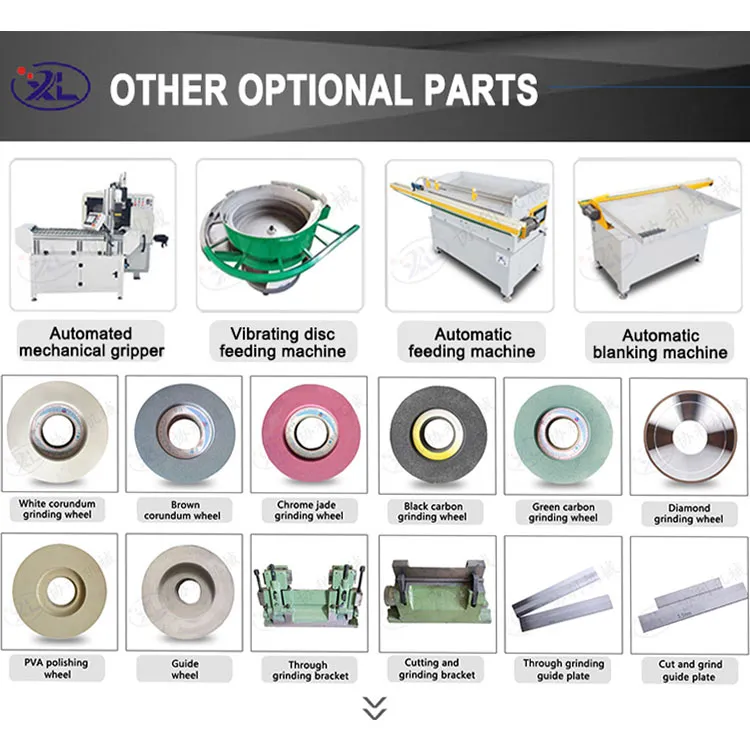Understanding Ovality in Centerless Grinding Products
Centerless grinding is a pivotal manufacturing process used for shaping and finishing various cylindrical workpieces. This method offers numerous advantages, such as high efficiency, precision, and the ability to process long lengths of materials continuously. However, maintaining tight tolerances and optimal product characteristics can be challenging, especially when issues such as ovality arise.
What is Ovality?
Ovality refers to the deviation of a circular cross-section from a perfect circle, leading to an elliptical shape. In the context of centerless grinding, ovality can be a significant quality control concern as it directly impacts the performance of the finished components. The ideal cylindrical workpiece should have a uniform diameter across its entire length. Still, irregularities during the grinding process can result in dimensions that vary in different orientations, thereby creating an oval shape.
Causes of Ovality in Centerless Grinding
1. Inconsistent Workpiece Support Centerless grinding relies on the workpiece being properly supported between the grinding wheel and the regulating wheel. If the support is compromised—due to wear in tooling, improper setup, or variability in workpiece dimensions—ovality may result.
2. Regulating Wheel Misalignment The alignment of the regulating wheel is crucial. If it is not correctly positioned or if it wears unevenly, it can cause the workpiece to pivot improperly, leading to an elliptical shape rather than a circular one.
3. Grinding Wheel Wear The wear pattern of the grinding wheel can influence the final dimensions of the workpiece. Uneven wear can lead to variations in grinding pressure, which can cause ovality. Regular maintenance and monitoring of the grinding wheel are necessary to maintain consistent performance.
4. Improper Feeding of the Workpiece The technique used to feed the workpiece into the grinder affects how material is removed. An inconsistent feeding rate or incorrect angle can lead to differential grinding and create an ovality issue.
5. Material Properties The characteristics of the material being processed, including hardness and consistency, can play a significant role in the occurrence of ovality. Variations in material structure may result in differential wear rates during the grinding process.
Impact of Ovality on Product Performance
ovality in centerless grinder products

The presence of ovality can severely affect the mechanical performance and functionality of finished products. Components that require precise fits—such as bearings or shafts—can lead to increased wear, misalignment, and ultimately product failure. Furthermore, ovality can have implications for assembly processes, leading to higher tolerances and additional costs in manufacturing.
Preventing Ovality in Centerless Grinding Process
To mitigate the risk of ovality, manufacturers can implement several best practices
1. Regular Maintenance Consistent inspection and maintenance of grinding equipment ensure that both the grinding and regulating wheels maintain optimal performance.
2. Proper Setup Attention to the alignment of the regulating wheel and the positioning of the workpiece is critical. Setting up the machine according to the manufacturer’s specifications will help achieve the best results.
3. Quality Control Checks Regularly measuring the dimensions of the workpieces during and after the grinding process can help identify issues early. Techniques such as laser measurement systems or micrometers can detect variations in real-time.
4. Uniform Feeding Mechanism Employing precise and uniform feeding mechanisms can contribute significantly to consistency in the grinding process. It’s essential to ensure that the workpiece enters the grinding zone at a steady and controlled rate.
5. Training and Skill Development Investing in training for operators can enhance their ability to recognize and address factors that could contribute to ovality.
Conclusion
Ovality in centerless grinding products is a challenge that manufacturers face, but understanding its causes and implementing preventative measures can significantly reduce its occurrence. By prioritizing maintenance, setup accuracy, and quality inspection, manufacturers can ensure high-quality finished products that meet stringent tolerances. This proactive approach not only improves product performance but also increases efficiency and reduces costs in the long run, contributing to a more robust manufacturing process overall.
-
Discount Automatic & Handheld Tube Polishing Machines UK Trusted SupplierNewsMay.07,2025
-
GC500 Centerless Grinder for Sale OEM Precision & Discount Models in ChinaNewsMay.07,2025
-
High-Precision Square/Rectangle Tube Polishing Machine OEM & Discount OptionsNewsMay.07,2025
-
OEM Industrial Metal Polishing Machine High-Efficiency & DurableNewsMay.07,2025
-
Precision Centerless Grinder Machines High Efficiency & Discount DealsNewsMay.07,2025
-
Affordable SS Pipe Polishing Machines Best Prices & QualityNewsMay.07,2025


